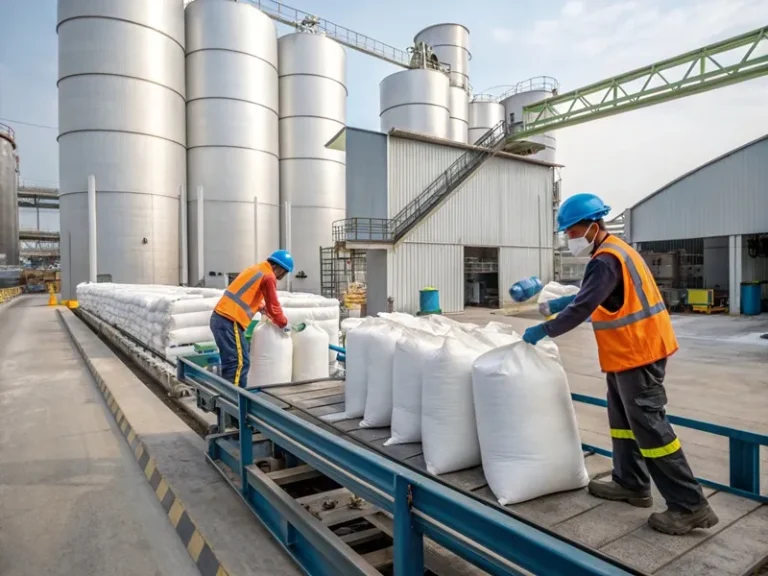
High Pressure Nelamine Use For Melamine Tableware Advantage
Tech Blog High Pressure melamine Use For Melamine Tableware Melamine tableware has become a staple for households, restaurants, and catering services worldwide due to its

Urea (CO(NH₂)₂) is a multifunctional compound discovered in 1773 and first synthesized from inorganic materials in 1828. Its functions cover agriculture, industry, medicine, skincare, and other fields. Its unique properties-high nitrogen content, water solubility, and chemical reactivity-make it indispensable in various applications.

Urea is the most widely used nitrogen fertilizer in the world, accounting for over 50% of global nitrogen fertilizer consumption. It provides essential nitrogen elements for plant growth. Urea has a nitrogen content of up to 46%. After being applied to the soil, it is decomposed by microorganisms into ammonium nitrogen or nitrate nitrogen, which is absorbed by plant roots and promotes protein synthesis, leaf growth, and yield increase.
When applied to soil, urea is hydrolyzed by soil bacteria (through urease) and converted into ammonium (NH₄⁺), which is directly absorbed by these plants. Excess ammonium is further converted into nitrate (NO ∝⁻) by nitrifying bacteria, which is another form of nitrogen that plants can utilize.
High nitrogen content: Urea contains 46% nitrogen by weight, which is the highest content among solid nitrogen fertilizers. This means that less material is needed to provide the same nutritional dose, thereby reducing transportation and application costs.
Versatility: Suitable for almost all crops (grains, fruits, vegetables) and soil types. It can be applied as a granular solid, dissolved in water for foliar spray, or mixed with other fertilizers (such as phosphorus and potassium) to form a balanced nutrient mixture.
Storage stability: Unlike ammonium nitrate, urea is non-explosive and easy to store, making it more suitable for large-scale agricultural operations.
By 2033, global demand for urea fertilizers will drive a market of $60.2 billion (with the Asia Pacific region dominating with a 45% share).

The chemical structure of urea-two amino groups (-NH₂) linked to a carbonyl group (C=O)-makes it a valuable raw material for manufacturing a range of industrial products.
Urea formaldehyde (UF) resin: Urea reacts with formaldehyde to form a thermosetting polymer, used for particleboard, plywood, and laminate flooring. These resins act as adhesives to bond wood particles into sturdy and durable boards.
Melamine urea formaldehyde (MUF) resin: Mixing urea with melamine can improve heat and water resistance, making these resins an ideal choice for cabinets and outdoor furniture.
High temperature decomposition of urea can generate melamine, which is used in flame retardants, plastics, and other products; Cyanuric acid can also be generated during pyrolysis, which is used in the production of disinfectants.
Urea is used as an additive to enhance the absorption efficiency of textile dyes and as a wet strength agent in the papermaking process to improve the water resistance of paper..
Diesel Exhaust Fluid (DEF): Urea is a key component of DEF, which can reduce nitrogen oxide (NOx) emissions from diesel engines. When injected into the exhaust stream, urea decomposes NOx. It converts it into harmless nitrogen and water vapor, meeting strict emission standards.

The solubility and ability to break hydrogen bonds of urea make it useful in medicine, especially in skin care and disease treatment.
Urea can reduce blood ammonia levels and is used to treat nitrogen metabolism disorders such as hyperammonemia. It regulates nitrogen balance through renal excretion. In addition, its antibacterial properties have inhibitory effects on common pathogenic bacteria such as Staphylococcus aureus, and it is often used in combination with other drugs to enhance efficacy (such as glucocorticoids when treating chronic eczema).
Urea is added to some drugs to increase the solubility of poorly water-soluble drugs and ensure better absorption in the body.
In peritoneal dialysis, urea is used to regulate the osmotic pressure of the dialysis solution and help remove waste from the blood.
Urea is a moisturizing agent that can suck water into the skin and has the effects of dissolving, softening, and removing dead skin cells. It treats psoriasis, eczema, and dry, cracked skin (e.g., in foot cream).
Urea can bind with moisture and enhance the skin’s ability to retain water. It is commonly used in creams or preparations for dry skin diseases such as hand and foot cracking and ichthyosis.
Low concentration (3%-10%) urea can soften the stratum corneum and help absorb other topical medications; High concentrations (20%-40%) have keratinizing effects and are used to treat onychomycosis, calluses, and other conditions.
Urea plays an important role in reducing pollution and treating industrial waste:
Wastewater treatment plants use urea to promote denitrification, which is a process in which bacteria convert nitrate (a pollutant) into nitrogen gas, reducing nutrient runoff that leads to massive algae growth in waterways.
In power plants, urea can neutralize sulfur dioxide (SO₂) in exhaust gases, reducing emissions caused by acid rain.
High concentrations of urea can disrupt hydrogen bonds in proteins, unfolding their structures to study protein folding and function.
Used as a plasticizer in polymer synthesis to improve the flexibility of materials such as polyurethane.
The use of urea goes far beyond its most famous fertilizer function. From agriculture to reducing car emissions, treating skin diseases, and using advanced materials, its versatility stems from its unique chemical properties.
With the increasing global demand for sustainable agriculture, low-emission industries, and innovative materials, urea will continue to be a key resource, proving that even the simplest compounds can have the most profound impact.

Tech Blog High Pressure melamine Use For Melamine Tableware Melamine tableware has become a staple for households, restaurants, and catering services worldwide due to its

Tech Blog Melamine packaging For manufacturers, inaccurate packaging not only fails to meet national standards but also increases labor costs and the risk of product

Tech Blog How to Detect Melamine in Textiles? Melamine powder, a nitrogen-containing heterocyclic compound, is widely used in flame-retardant textiles and plastic products due to

JINGJIANG MELAMINE POWDER
© JINJIANG MELAMINE